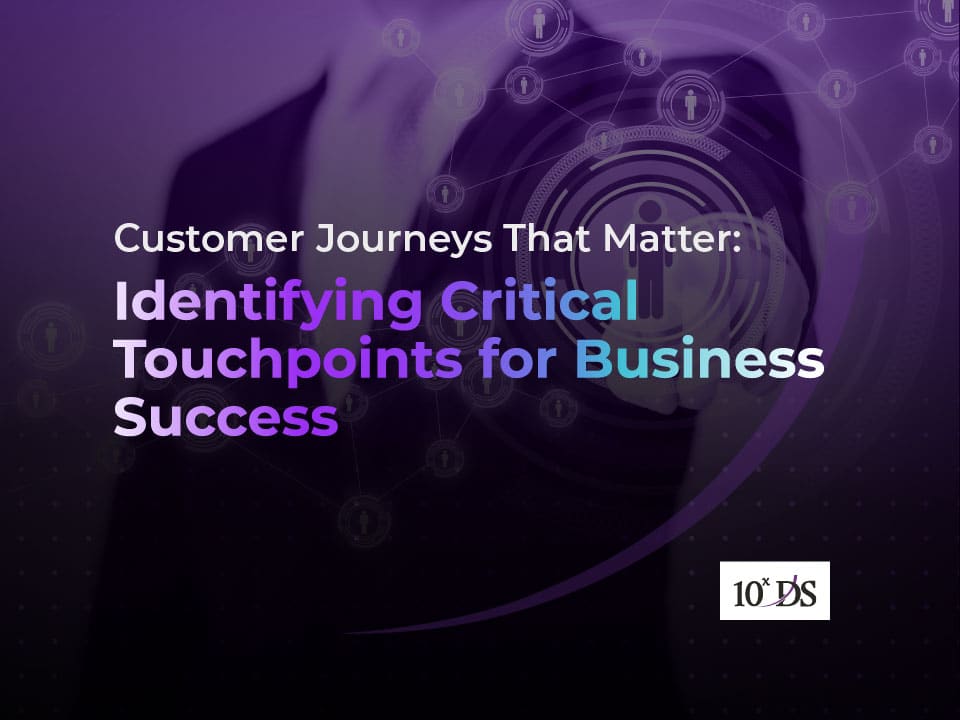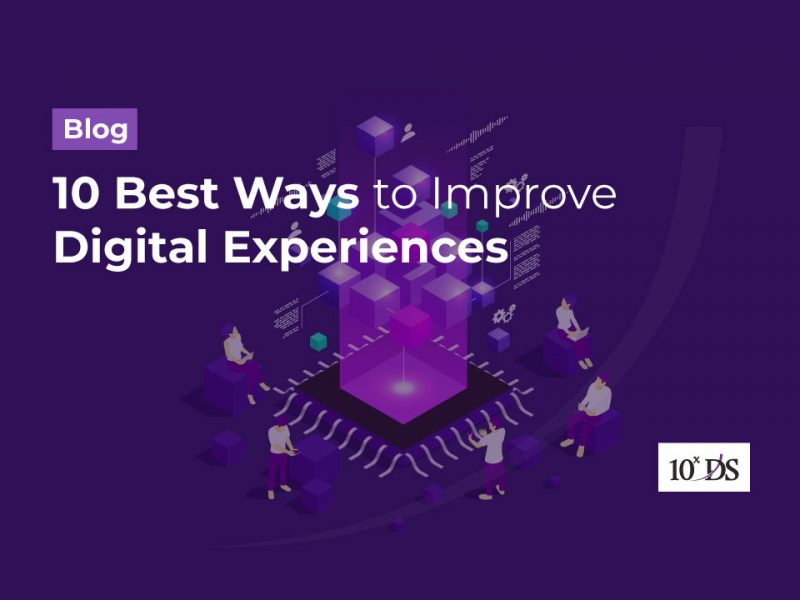
Customer Journeys That Matter: Identifying Critical Touchpoints for Business Success
Customers are the lifeblood of any business. They are the reason why businesses exist and the driving force behind revenue and growth. Paying attention to customers is crucial because they can provide valuable insights into the market, competitors, and overall industry trends. Understanding customer needs, preferences, and behaviours can help businesses make better decisions about product development, marketing, and customer service. By listening to customers and responding to their needs, businesses can build trust, enhance customer loyalty, and ultimately drive revenue growth. Customer-centric businesses are more likely to succeed in today’s competitive marketplace and stay ahead of the curve. For example, Amazon is known for its customer-centric approach. The company’s mission is to be “earth’s most customer-centric company.” Amazon offers a seamless shopping experience, personalized product recommendations, and fast and reliable shipping options. Similarly, Apple is known for its focus on design and user experience. The company offers a seamless, integrated experience across all of its products and services. Apple’s retail stores are also designed to provide a personalized, customer-centric experience.
A customer journey refers to the path or series of steps that a customer goes through to interact with a brand or business, from initial awareness to final purchase and post-purchase support. It includes all the touchpoints and interactions a customer has with a business across various channels, such as social media, email, website, phone, and in-store. The customer journey can be divided into different stages, such as awareness, consideration, decision, and retention. Each stage involves different types of interactions, and the goal is to create a seamless and personalized experience for the customer, ensuring their needs and expectations are met.
Mapping out the customer journey can help businesses understand their customers’ needs and pain points, identify opportunities for improvement, and optimize their marketing and sales strategies accordingly. It allows businesses to create a more customer-centric approach and build better relationships with their customers.
1. Awareness stage
It is the first stage in the customer journey, where potential customers become aware of a brand, product, or service for the first time. It is the stage where customers realize that they have a problem or need, and they start looking for a solution. During the awareness stage, customers may come across a brand or product through various channels, such as social media, search engines, advertising, word-of-mouth, etc. The goal of businesses during this stage is to make a positive first impression, build brand awareness, and establish trust with potential customers. Businesses can use various tactics during the awareness stage to attract potential customers, such as content marketing, social media marketing, influencer marketing, and search engine optimization (SEO). The key is to create valuable content that educates and informs potential customers about the product or service and to make it easily accessible and shareable. This can help to establish the brand as a thought leader and increase its visibility in the market.
2. Consideration stage
It is the next stage in the customer journey, where potential customers start actively considering different options to address their problem or need. During this stage, customers are comparing different brands, products, or services to find the one that best meets their needs. During the consideration stage, businesses need to focus on providing valuable and relevant information that helps potential customers make informed decisions. This includes highlighting the unique features and benefits of the product or service, addressing any potential concerns or objections, and providing social proof, such as customer testimonials and reviews. Businesses can use various tactics during the consideration stage to influence potential customers, such as email marketing, retargeting ads, and personalized recommendations based on their previous interactions with the brand. The key is to provide a seamless and personalized experience that meets the needs and preferences of each potential customer, while also highlighting the unique value proposition of the brand or product. This can help to build trust and loyalty and increase the likelihood of conversion.
3. Decision stage
The decision stage is the third stage in the customer journey, where potential customers have narrowed down their options and are ready to make a purchase decision. During this stage, customers have already researched the different options available and evaluated the benefits and drawbacks of each one. The goal of businesses during the decision stage is to provide a smooth and easy purchasing process and to address any remaining concerns or objections that potential customers may have. This includes providing clear pricing information, offering incentives or promotions, and providing easy and secure payment options. Businesses can use various tactics during the decision stage to encourage potential customers to make a purchase, such as personalized product recommendations, customer support, and social proof, such as user ratings and reviews. The key is to provide a seamless and hassle-free experience that meets the needs and preferences of each customer, while also highlighting the unique value proposition of the brand or product. This can help to increase customer satisfaction and loyalty and encourage repeat business and referrals.
4. Retention stage
The retention stage is the final stage in the customer journey, where businesses aim to retain their customers and encourage them to become repeat buyers or brand advocates. During this stage, businesses focus on building long-term relationships with their customers and providing ongoing support and value. The goal of businesses during the retention stage is to create a positive customer experience that exceeds their expectations and to encourage them to engage with the brand on an ongoing basis. This includes providing excellent customer service, offering loyalty programs and incentives, and providing ongoing education and support. Businesses can use various tactics during the retention stage to retain and engage their customers, such as email marketing, social media engagement, personalized recommendations, and proactive customer support. The key is to stay in touch with customers, provide ongoing value, and build a community around the brand that encourages customer loyalty and advocacy. By focusing on customer retention, businesses can increase customer lifetime value, reduce churn, and generate positive word-of-mouth, which can lead to new customer acquisition and increased brand awareness.
Making customer journey mapping is a process that lists down all the activities under each stage one leading to the other. Business owners need to be very clear on key business goals that the customer journey mapping should support. For example, if the business goal is to increase brand awareness, the focus should be on customer journeys that are most likely to generate maximum reach. This would need careful evaluation of customer data like the channels or mediums the customers or most active in for running campaigns and ads. The organization also needs to consider customer feedback on their experiences and identify any pain points or areas for improvement in their specific journey. This can help you prioritize customer journeys that are most important to your customers. This would further help in creating a detailed map of the customer journey for each journey and it should include key touchpoints, pain points, and opportunities for improvement. While organizations may have multiple areas to improve or fix, it would be ideal for organizations to prioritize the customer journey that needs intervention immediately. This helps in identifying the most critical pain points and areas for improvement and focuses resources such as time, budget, and personnel on addressing those first. This can help improve the customer experience, increase revenue, and achieve business goals. Below are the steps in mapping the customer journey for a specific goal.
Identify critical journeys: Start by identifying the customer journeys that are most critical to your business. This may include journeys that generate the most revenue, have the highest conversion rates, or are most likely to result in customer retention.
Evaluate impact: Next, evaluate the impact of each customer journey on your business goals. For example, if your business goal is to increase revenue, you may want to prioritize journeys that have a direct impact on sales, such as the checkout process or product recommendations.
Assess pain points: Assess the pain points and areas of opportunity for each critical customer journey. This may involve reviewing customer feedback, analyzing data, and conducting customer research. Prioritize journeys that have the greatest potential for improvement and that are most likely to have a positive impact on the customer experience.
Allocate resources: Once you have identified the critical journeys and areas of opportunity, allocate resources accordingly. This may involve assigning personnel to work on specific journeys, investing in new technology or tools, or dedicating budget to marketing or customer experience initiatives.
Test and measure: Test and measure the impact of your efforts on each critical journey. Use customer feedback, analytics, and other metrics to evaluate the success of your initiatives and identify areas for improvement.
Continuously optimize: Continuously optimize the customer journey based on feedback and data. Regularly review and update your customer journey map to ensure that you are prioritizing the right journeys and that you are allocating resources effectively.
One example of a company that implemented customer journey mapping is Airbnb. Airbnb is an online marketplace allowing people to rent their homes or properties to travelers seeking accommodation. By mapping out the customer journey, Airbnb was able to identify pain points in the booking process and improve the user experience. One critical journey identified as the “search” journey, which is the first step for users when booking a trip. Airbnb focused on improving the search experience by adding new filters and sorting options, improving the accuracy of search results, and adding personalized recommendations. As a result, the company saw a considerable increase in bookings and in revenue. Best Buy, a multinational electronics retailer headquartered in the United States used customer journey mapping to improve the in-store experience for customers. The long checkout process and difficulty in finding products were identified as critical pain points during customer journey mapping, and opportunities for improvement, such as personalized recommendations and easier product discovery. The company implemented changes, such as a mobile checkout process and personalized in-store recommendations, which resulted in an increase in customer satisfaction and in sales.
As we have seen, customer journey mapping derives manifold benefits. By mapping out the customer journey, businesses can identify pain points and opportunities for improvement in the customer experience and implement strategies to address them. Improvements in customer journeys such as purchase process, delivering a seamless, personalized experience, businesses can increase customer satisfaction and build loyalty, resulting in repeat business and positive word-of-mouth. Such a positive customer experience can drive revenue growth through increased customer retention and acquisition. Customer journey mapping also provides valuable insights into customer needs, preferences, and behaviours, enabling businesses to make better-informed decisions about product development, marketing, and customer service. It also helps align internal teams around a common goal of delivering an exceptional customer experience and improving communication and collaboration across the organization. And by prioritizing customer journeys, businesses can differentiate themselves from competitors and gain a competitive advantage in the market.


